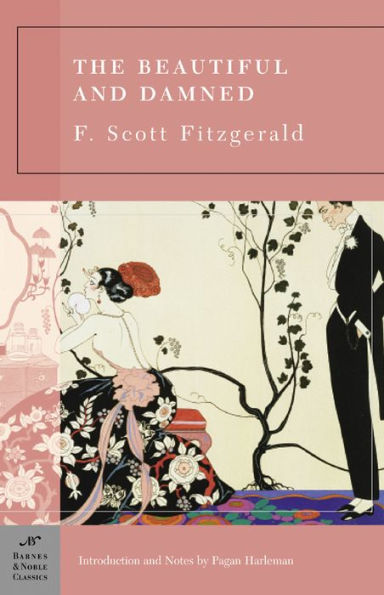Read an Excerpt
From Pagan Harleman’s Introduction to The Beautiful and Damned
F. Scott Fitzgerald wrote The Beautiful and Damned, his second book, when he was only twenty-five. It was published in 1922, just as the Jazz Age was beginning to hit its stride. The war was over, the economy was booming, the skyscrapers were rising, the flappers were vamping, the alcohol was flowing (despite Prohibition), the music was swinging, and the party appeared to be never-ending. America was, as Fitzgerald later said, “going on the greatest, gaudiest spree in history and there was going to be plenty to tell about it” (The Crack-Up, with Other Pieces and Stories, p. 59; see “For Further Reading”). Who better to chronicle the splendor of this new age than Fitzgerald, the man who since the rip-roaring success of his first novel had been called its most notorious voice?
Although he was the poster boy for this extravagant age, with his second book Fitzgerald chose to focus not on the splendor of the era, but instead on its spoils, the ugly aftermath of the party. The Beautiful and Damned is a cautionary tale of a young, insouciant, and irresponsible couple, Anthony and Gloria Patch, and their inevitable downward spiral. In the beginning, they are carefree and happy, buoyed by their love for each other and the hope that Anthony will one day inherit his grandfather’s vast fortune. By the end, they have deteriorated to such an extent that both appear to be bitter, empty shells of their former selves. Gloria has lost her beauty and with it her confidence, and Anthony has metamorphosed into a dissolute drunk who behaves like a child. Theirs is a bleak story without any real promise of redemption.
The Beautiful and Damned is Fitzgerald’s least-known novel, yet it provides fascinating insight into his development as a writer and his evolution as a person. Stylistically, it functions as the intermediate step between the unfocused but exuberant vitality of his debut novel, This Side of Paradise, and the superb craftsmanship of his third and in many ways greatest book, The Great Gatsby. While This Side of Paradise is a discursive story with digressions aplenty and The Great Gatsby is a seamless, nearly flawless narrative, The Beautiful and Damned is somewhere in between: a fully fashioned and controlled story that nevertheless often belabors its points and exhausts its themes. Despite its defects, the book is a compelling story that allowed Fitzgerald to explore fundamental questions and themes he developed throughout his fiction: What is the purpose and the cost of maintaining dreams? What motivates failure? What causes people to fall in and out of love? And what makes a character tragic? Tragedy, of course, was a running theme in Fitzgerald’s psyche and his life.
When Fitzgerald began to write The Beautiful and Damned, his life was anything but tragic. His first novel had just been published to wide critical and popular acclaim, selling more than 75,000 copies. He was universally hailed as literary wunderkind and had become one of the highest-paid short story writers in the business. He had finally won the hand of his sweetheart, Zelda, and together they were living the high life in New York, feted everywhere as the glamour couple. At the age of twenty-four, Fitzgerald had achieved all his dreams, and the future looked infinitely bright and promising. Yet within fourteen years he would hit rock bottom and become an alcoholic living in a cheap motel, eating twenty-five-cent meals and washing his own clothes in the sink while his wife was treated for schizophrenia in a nearby sanatorium. By then, unable to write and owing tens of thousands of dollars, overwhelmed by his dire situation, Fitzgerald would crack, suffer a nervous breakdown, and, like his character Anthony Patch, become a broken man.
While there is no simple explanation of how Fitzgerald’s downfall came about, there is no question that by writing The Beautiful and Damned he was expressing his fears of dissipation and, to a certain extent, prophetically anticipating and foreshadowing his own decline. Although he created several memorable heroes, in many ways Fitzgerald was his own greatest tragic figure. In keeping with the credo of his Romantic idols, like John Keats, he lived life at full speed, flinging himself into every experience with frightening energy to enlarge his powers as an artist. He married a woman who zealously asserted her own will and her thirst for life without fear, inhibition, or, at times, regard for him. Fitzgerald always had the capacity to recognize the risks inherent in his own behavior, to acknowledge that he was self-destructive, but he lacked the desire, strength, or ability to change. His resistance to change was perhaps a result of his artistic commitment. Fitzgerald’s first and foremost priority was to experience life, then to write about it. Everything else, even self-preservation, came second. While his lack of caution may in retrospect appear irresponsible, even indeed tragic, he did produce magnificent writing.





